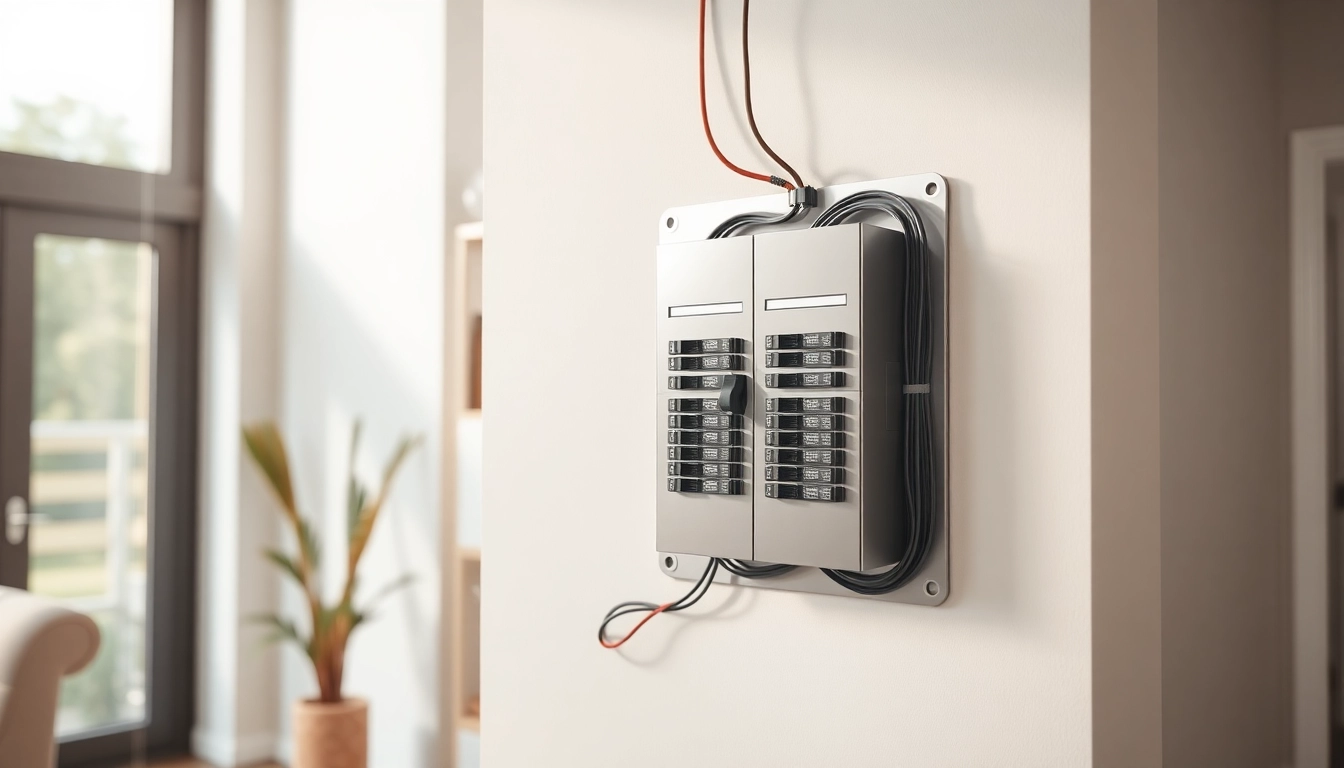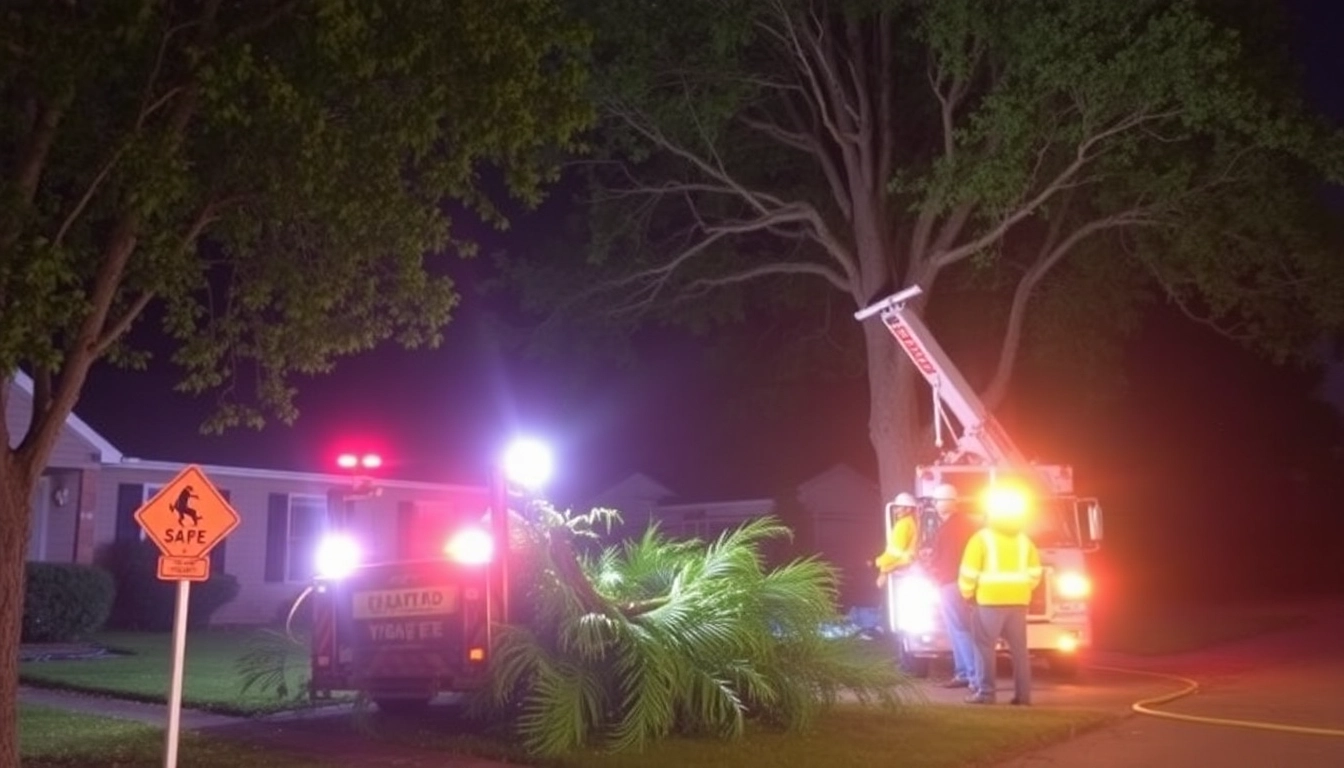Understanding the Electrical Panel
What is an Electrical Panel?
An Electrical Panel, often referred to as a breaker box or service panel, is a critical component of a building’s electrical system. It acts as the main hub for electrical distribution, managing the flow of electricity from the utility line into the circuits that power various fixtures and appliances within a home or commercial property. Essentially, it serves as a bridge between the external power grid and the internal wiring of a structure, ensuring that electricity is safely and effectively routed to where it is needed.
Components of an Electrical Panel
Understanding the components of an electrical panel can help homeowners appreciate its function and maintenance needs. Key components include:
- Main Breaker: This is the large switch that controls the power to the entire panel. It can be turned off during emergencies or when performing maintenance.
- Circuit Breakers: Smaller switches that protect individual circuits. If a circuit becomes overloaded, the breaker will trip, cutting off power to that circuit to prevent overheating and potential fire hazards.
- Bussing Bars: Conductive strips that distribute electricity from the main breaker and connect to each circuit breaker.
- Neutral and Ground Bus Bars: These bars provide a common ground for all circuits, aiding in protecting against electrical overloads.
Importance of Electrical Panel in Home Wiring
The Electrical Panel plays a pivotal role not only in electrical distribution but also in maintaining safety within any electrical system. It ensures that the power is properly divided into different circuits, preventing overloads that can lead to power surges, electrical fires, and significant damage to electronic devices. Moreover, it allows for easy upgrades and modifications to electrical systems, making it essential for homes with fluctuating power needs as new electronic devices are added. In addition, regular checks and upgrades of the electrical panel can lead to improved energy efficiency and lower utility costs.
Signs You Need to Upgrade Your Electrical Panel
Common Signs of Electrical Panel Overload
Recognizing when it’s time to upgrade your electrical panel is crucial for safety and efficiency. Signs of overload can include:
- Frequent Circuit Breaker Trips: If your breakers are tripping regularly, it indicates that your panel is struggling to manage the electrical load.
- Burning Smells or Discoloration: A burning smell or discoloration around the panel or circuit breakers is a clear warning sign that something is wrong, often indicating overheating.
- Flickering or Dimming Lights: If the lights in your home frequently flicker or dim, especially when using multiple appliances, it suggests that the panel cannot distribute electricity appropriately.
Effects of Aging Panels on Electrical Systems
Aging electrical panels, particularly those over 20 years old, can exhibit decreased reliability and safety. Old panels may not accommodate modern energy demands, leading to unsafe conditions. In many cases, older panels utilize outdated technology such as fusible disconnects, which can be less efficient than contemporary circuit breakers. Furthermore, corrosion and wear can compromise connections, increasing the potential for shorts or fires.
Local Code Requirements for Electrical Panels
Building codes and regulations can vary significantly based on location. Often, local codes will dictate the minimum requirements for electrical panel capacity, circuit overload protection, and installation standards. Therefore, when considering an upgrade, it’s essential to understand the local regulations to ensure compliance and safety. This might involve consulting with a licensed electrician who is familiar with these standards.
Choosing the Right Electrical Panel
Types of Electrical Panels Available
When choosing a new electrical panel, several options exist, and understanding the differences among them can guide your decision:
- Main Breaker Panels: These panels control all the circuits in a home and include a single main breaker that regulates power flow.
- Subpanels: These are smaller panels used to provide power to specific areas of larger properties, allowing better management of circuit loads.
- Smart Panels: Modern panels that offer advanced features such as remote control, real-time monitoring, and integration with smart home technologies.
Factors to Consider When Selecting an Electrical Panel
Choosing the right electrical panel involves considering several factors:
- Capacity: The panel must accommodate the electrical needs of your home. Common capacities include 100, 200, and 400 amps, but larger homes with significant power needs may require higher capacities.
- Type of Breakers: Opt for circuit breakers that best suit your needs; they may vary in size and features, including GFCI (Ground Fault Circuit Interrupters) and AFCI (Arc Fault Circuit Interrupters).
- Manufacturer Reputation: Choose a reputable manufacturer to ensure durability, safety, and efficient performance.
Understanding Panel Ratings and Capacities
The electrical panel’s rating indicates its maximum capacity for distributing electrical load. This is critical for ensuring that the panel can handle the electrical consumption of all devices and appliances. Ratings are usually expressed in amperage and can range significantly. A 100-amp panel is suitable for smaller homes, while larger, modern homes may demand up to 200 amps or more. Ensuring that your panel’s capacity matches current and future electrical demands can prevent frequent overload situations and ensure seamless electricity supply.
Steps to Safely Upgrade Your Electrical Panel
Preparation and Planning for Upgrading
Upgrading an electrical panel involves careful planning and preparation. Begin by assessing your current electrical load, documenting all electric consumption from home appliances, and consulting with a licensed electrician to determine the necessary capacity for your new panel. Additionally, decide on the panel’s location, which should be easily accessible but preferably away from areas prone to moisture or damage.
Step-by-Step Process for Installation
- Shut Off Power: Disconnect power from the main supply to ensure safety during the upgrade process.
- Remove the Old Panel: Carefully take out the existing panel, ensuring that all connections are marked for easy installation of the new panel.
- Install the New Panel: Mount the new electrical panel in the selected location, ensuring it is securely attached to the wall.
- Reconnect Circuits: Reconnect all circuits according to the markings made earlier, ensuring that each wire is attached to the correct breaker.
- Test the Panel: Once connected, restore power and test all circuits to ensure the panel operates effectively.
Common Safety Precautions During Installation
Safety is paramount when upgrading an electrical panel. Key precautions include:
- Always ensure the main power supply is turned off before beginning any work.
- Use insulated tools to prevent electrical shock during installation.
- Keep the work area dry and free from clutter to avoid accidents.
Maintaining Your Electrical Panel for Longevity
Routine Maintenance Tips for Electrical Panels
Regular maintenance of your electrical panel can prolong its lifespan and ensure optimal performance. Some tips include:
- Perform annual inspections to check for signs of wear, corrosion, or overheating.
- Clear any dust and debris from the panel to prevent overheating.
- Check that all connections are tight, as loose connections can lead to electrical failures.
Signs Your Electrical Panel Needs Attention
Being vigilant can prevent serious issues down the road. Signs that your electrical panel may need attention include:
- Visible signs of rust, corrosion, or damage to the panel.
- Unusual noises coming from the panel, such as buzzing or crackling.
- Increased electricity bills possibly indicating inefficiencies in the panel.
When to Call a Professional for Help
While some minor maintenance tasks can be performed by homeowners, hiring a professional electrician is essential when:
- Upgrading the panel or making significant modifications to the electrical system.
- Dealing with any electrical issues that are complex or beyond basic troubleshooting.
- If you notice any safety concern that requires immediate attention to prevent hazards.



